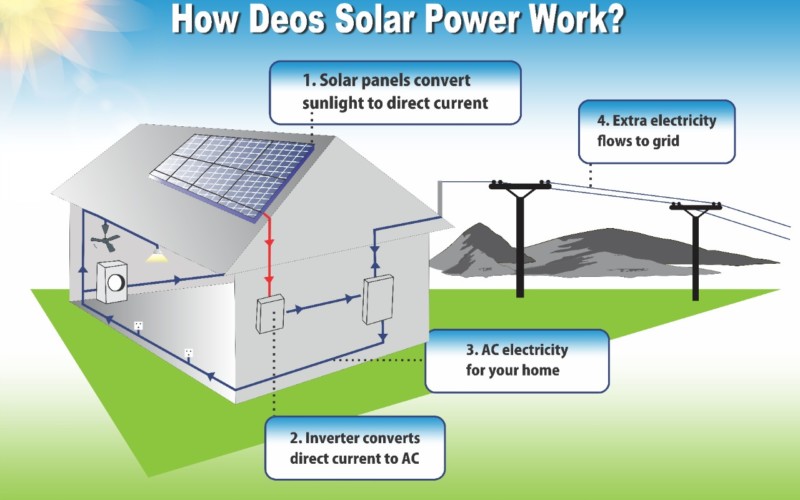
How It Works
How do solar panels generate electricity?
A standard solar panel consists of a layer of silicon cells, a metal frame, a glass casing, and wiring to enable current to flow from the silicon cells. Silicon is a nonmetal and possesses conductive properties which allow it to absorb and convert sunlight into electricity. When light falls a silicon cell, it sets electrons into motion, initiating a flow of electric current. This phenomenon is known as the ‘photovoltaic effect’, and is the basis for the general functionality of solar panel technology.
The photovoltaic effect
The science of generating electricity using solar panels is the photovoltaic effect and was first discovered in 1839 by Edmond Becquerel. Broadly, it can broadly be thought of as a property of certain materials known as semiconductors that allows them to generate an electric current when exposed to sunlight.
The photovoltaic process can simply be described as the following:
- The silicon semiconductor absorbs solar radiation
- Electrons begin to move when sun’s rays interact with the silicon cell, creating a flow of electric current
- This Direct Current (DC) is captured by wires and fed to a solar inverter which converts it to alternating current (AC) i.e. the form of electricity supplied by electricity utility companies to consumers.

